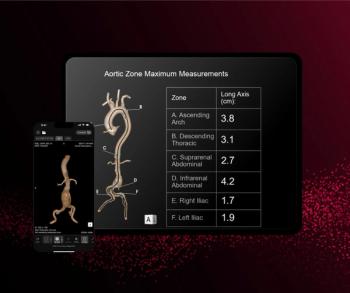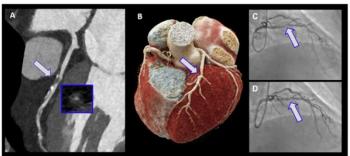
Contrast-Enhanced PET/CT for Staging of Pancreatic Cancer
Contrast-enhanced PET/CT appears to be better than non-CE PET/CT in assessing distant metastasis in patients with pancreatic cancer.
Contrast-enhanced (CE) PET/CT provides a more precise assessment of distant metastasis, scalene node metastasis, and peritoneal dissemination in patients with pancreatic cancer, according to a study published in the
Researchers from Japan sought to clarify the diagnostic impact of CE 18F-fluorodeoxyglucose (FDG)–PET/CT for staging of pancreatic cancer compared to non-CE PET/CT.
Ninety-five patients (age range: 36 to 83) diagnosed with primary pancreatic cancer participated in the study, which took place between April 2006 and November 2009. Two blinded reviewers analyzed the images, and the researchers compared diagnostic accuracy between the non-CE PET/CT and CE PET/CT images.
The results showed that, for T-staging, both modalities correctly diagnosed invasion of the duodenum (20 cases, 21%), mesentery (12 cases, 13%), and retroperitoneum (13 cases, 14%).
“The ROC analyses revealed that the Az values of celiac artery (CA), common hepatic artery (CHA), splenic artery (SV), and superior mesenteric vein (SMV) invasion were significantly higher in the CE PET/CT group for both readers,” wrote the authors.
Contrast-enhanced PET/CT correctly diagnosed nodal metastasis in 38 patients (88%); non-CE PET/CT correctly diagnosed the same metastasis in 45 patients (87%). Diagnostic accuracies of nodal metastasis in two modalities were similar.
Distant metastasis, scalene node metastasis, and peritoneal dissemination were correctly assigned in 39 patients (91%) using CE PET/CT, while the same was found in 42 patients (81%) with non-CE PET/CT. “Diagnostic accuracy of distant metastasis, scalene node metastasis, and peritoneal dissemination with CE PET/CT was significantly higher than that of non-CE PET/CT,” the authors noted.
The authors concluded that using contrast-enhanced PET/CT provided a more precise look at distant metastasis, scalene node metastasis, and peritoneal dissemination in patients with pancreatic cancer.
Newsletter
Stay at the forefront of radiology with the Diagnostic Imaging newsletter, delivering the latest news, clinical insights, and imaging advancements for today’s radiologists.

























